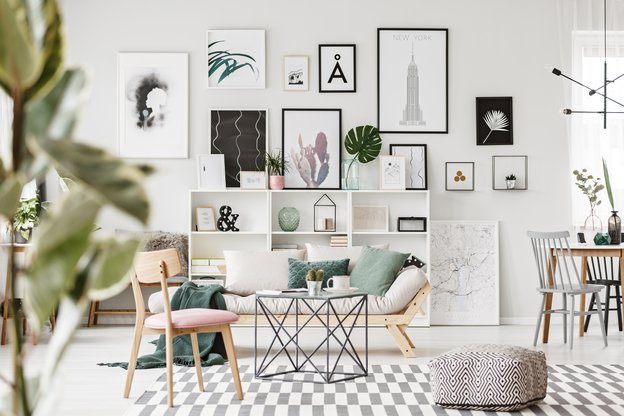One of the great upsides of renting is that it provides a much larger degree of freedom than owning. However, it can feel difficult to personalise your rental and make it feel like a home. Luckily, there’s plenty of ways you can personalise your space, but it’s important to understand what changes you can make and how to negotiate them with your landlord or agent.
What are the current laws?
In most Australian states, tenants must first seek the landlord’s consent for any alterations - whether it be painting the property or drilling into the wall to hang up a painting. It is strongly recommended that you ask for written consent as written records might be useful if a dispute arises surrounding the alteration in the future.
Although consent to make alterations from the landlord is essential, a landlord cannot unreasonably refuse a tenant’s request to make an alteration of a “minor nature”. Although rental laws don’t define what would constitute an alteration of a “minor nature”, some examples of what may be considered reasonable include:
-
Putting a reasonable number of picture hooks in the wall
-
Connecting to pay television
-
Installing additional security features
-
Planting vegetables or flowers in the garden
However, landlords have the right to refuse larger alterations such as work which:
-
Involves structural changes
-
Is not reasonably capable of being rectified, repaired or removed
-
Is prohibited under a law
-
Involves painting the property
Payment for the alteration is to be decided between the tenant and landlord, although the cost will usually be borne by the tenant, unless the landlord offers (again, get this agreement in writing!).
Don’t be afraid to ask for alterations!
If you think a minor alteration will greatly improve the feel of your rental and add value to the property, don’t be afraid to ask your landlord. Landlords are often more likely to see long-term potential in tenants that are willing to spend money on the property, whilst simultaneously increasing the value of the property.
How to personalise your rental
There are plenty of ways to personalise your rental property without making alterations to the structure of the property.
1. Pot plants make for a relocatable garden
Pot plants are great for many reasons; they brighten-up any indoor area, are perfect for apartments that don’t have the space for a garden, and are easy to bring with you to future rental properties.
2. Add some art!
Many renters can be hesitant to invest in art, especially when accustomed to short-term leases. However, adding art creates a personal touch to the property, making it feel much more like a home. Make sure to use removable adhesive hooks so you don’t have to ask landlord permission (subject to the terms of your rental lease), or carefully lean art against walls or bookshelves.
For smaller or darker rooms, consider leaning a larger mirror against the wall. Apart from being functional, this will reflect light around the room and make the space feel bigger.
3. Be selective when buying furniture
Purchasing furniture or decorations for a rental property is perhaps counterintuitive; instead of purchasing furniture to “fill a spot”, as you would in a home, it is important to buy furniture that is portable and can be taken to a new rental, especially if you’re on a short-term or ongoing lease.
Top tips for negotiating alterations
For landlords that are tentative about your suggested alterations, consider the following tips:
-
Landlords are more likely to agree to your proposed alteration if you plan to use professionals to carry it out. When asking permission to make the alteration, be sure to be specific; providing as many details as possible. It’s recommended you send this in an email so that the landlord’s response is in writing, and you have records of your conversations.
-
If you want to paint either the interior or exterior of the house, consider selecting a few colour options that you like and letting your landlord choose between them. This allows for the best compromise and means the landlord is more likely to be ok or even encourage the alteration.
-
Landlords are much more likely to accept your alteration if it adds value to their property.
It’s also a good idea to take your lease security into consideration when contemplating making major alterations - it’s no use painting your property if you’re on a month-to-month lease. If you like the property enough to make larger changes, first make sure that you have a lease of a reasonable duration so that you have time to enjoy the alterations you want to make.
Happy renting!
